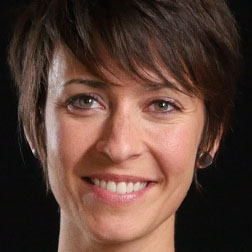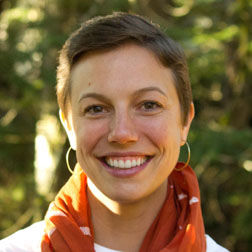Recently we led a learning session in our community entitled “Owning your Facilitator Voice”. In this rich and fruitful inquiry we explored our own values about facilitator neutrality, and how they shape the way we bring in our voice and experience while facilitating. We also invited the group to consider ways we might bring more of ourselves – emotions, experience, and intuition – more fully into the room while facilitating.
On the one hand, many of us appreciated how essential neutrality is for becoming a trustable agent of a group’s intention. Yet, as several folks in the session mentioned, there’s a flat and lifeless feeling that can be evoked with the idea that somehow facilitators “ought” to remain neutral no matter what.
This enlivening exploration took a both/and view, looking more to the deeper question of what few but great desires, or intentions, we are never neutral about—and from that stance of clarity and commitment—what we are free to be open, curious, and open-handed towards.
The question of how being deeply, intentionally not neutral so that we can become more openly, freely neutral elsewhere can bring us into a deeper relationship with the central desires and devotions that guide our work.
Where are we captured by non-neutrality?
One of the best reasons to develop the capacity of neutrality is to avoid the trouble that comes from being provoked and triggered when in the facilitator seat. I’ll never forget once being in a group where the facilitator became so rigid about her rules for how many times each person could speak, that the group mutinied by handing off their “microphone” currency moments to others who had already spoken to reclaim the flow of the discussion. Naturally, the discussion topic became secondary—the power struggle between the room and the facilitator was far more interesting!
I can imagine we’d all hate to find ourselves in the very hot and bothered position of feeling our aperture suddenly close with anger, embarrassment, or fear right when we most want to be in service of what’s happening in the room—often during moments of conflict, confusion, and intense emotion. So we need to entrain our bodies, minds and emotions with non-reactivity.
Yet our vital energy is the source of our creativity and humanity. Turn it off, and the life drains out of us and the room.
In the learning session, we included a reflection practice aimed at exploring the patterns where we can find ourselves tipping into non-neutrality. This may show up as moving to protect ourselves by withholding our voice, or, by moving to protect ourselves by controlling and over-using our voice. These moments happen all the time in our lives!
And sometimes we’re just quite skilled at making them look choiceful, conscious, or wielding our facilitator power to make them palatable for the group. Withholding looks like measured observation, and re-directing looks like a helping hand.
But, inside, we each know what it feels like in us to hold back or to control what’s happening out of a desire to avoid or sidestep discomfort in ourselves.
Here are the prompts we used during the session, and we invite you to reflect on these as well, so you can explore these patterns within yourself more deeply:
- When I’m captured by the move to withhold my voice, what tends to be happening in the room? When is a time recently when this happened? What did it feel like?
- When I’m captured by leaning in and controlling, what tends to be happening in the room? When is a time recently when this happened? What did it feel like?
Becoming intimate with our nervous system’s response to alarm—and how this changes our aperture of awareness—broadens our view of the inherent interconnectedness we can’t get outside of as facilitators.
And, it can reveal some of the desires or commitments that may be defining our facilitator identity at any moment. Then we might choose to explore: are those desires coming from the everyday self parts of me that long to be valued, appreciated, or included? To get it right? What might the greater, deeper desire be?
For me, the greater desire that transcends and includes the parts of me that want to be approved of or liked is simply the great joy of being in attunement.
In that mutuality, we can create and connect. We can be and become. Questions of approval simply dissolve.
What few, great desires live at the heart of your facilitation?
The final inquiry we touched on during the session was to reflect and connect with one or two of these ‘few but great’ desires. These are the places where we can feel our impassioned non-neutrality. They enliven us. They are big, vast, and worthy. They outlive us.
Here are three reflection questions that can invite you closer to feeling and naming the few but great desires that animate your facilitation:
- What brings me the most joy about facilitating groups?
- What do I most long to experience when I am facilitating?
- When I witness this in the room, I am touched with wonder and awe…
Set your timer for 5 minutes per question, and allow your mind and heart to wander. What experiences and memories, dreams and longings bubble up as you sit with these questions? Words, imagery, movement and color are all welcome. What great desire lives in you?
It is always a privilege and honor for us to be included in your choice for where you learn and who you practice and play with. We are appreciative of those who attended the session for sharing their wisdom and insights with us, and we are appreciative of you, taking the time to read this now, engaging with this evolving conversation, and hopefully experimenting with this in your facilitation practice.
We’d love to know your thoughts in the comments below – and would especially love to hear how you are experimenting with bringing your own unique voice into the engagements you’re facilitating.




